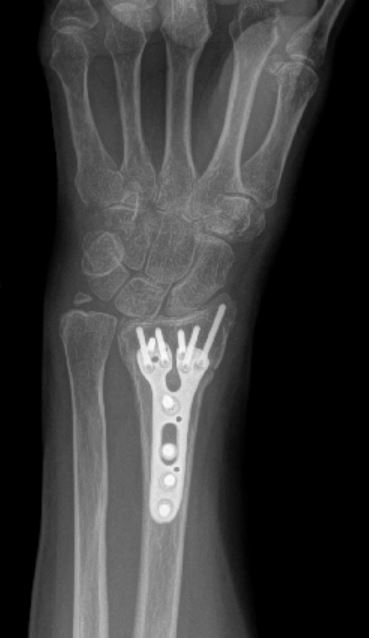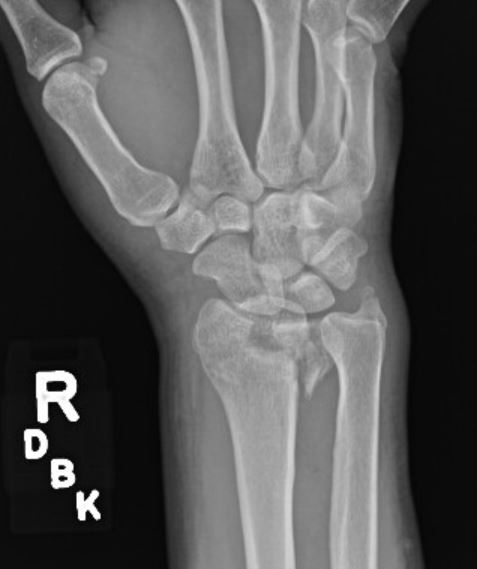A wrist fracture is a common wrist injury. This type of injury can occur from a variety of trauma, such as a fall at home or a motor vehicle collision. The distal radius is the portion of the radius bone just below the wrist joint. As we age, the bone of the distal radius loses bone mass and becomes more prone to fracture, particularly in post-menopausal women and people with osteoporosis. The distal radius may break (also called a “fracture”) as a result of a slip and fall in these cases. Younger patients with stronger bones may break the distal radius after high-energy trauma, such as a sports injury or car accident. Broken wrist treatment involves specialized orthopedic care, and proper healing is needed to obtain the best outcome. Wrist fracture treatment is available in Raleigh from the experts in hand and upper extremity care at the Raleigh Hand to Shoulder Center.

Wrist Fracture Treatment Options
Wrist fracture treatment depends on the severity of the fracture on the x-rays and the patient’s health and activity level. The distal radius bone usually heals after a fracture; however, a goal of treatment is for the bone to heal in a good position for function. Many people have fractures which are in good alignment. These patients do not require surgery. Treatment in these cases is typically protection in a cast or brace for several weeks. Follow-up x-rays are obtained in clinic to see how the fracture is healing. Waterproof casts for wrist fracture treatment in Raleigh are available at the Raleigh Hand to Shoulder Center. Surgery is recommended for active patients with displaced or unstable fractures, who would benefit from restoration of the alignment.
Below is a video from the American Society for Surgery of the Hand. All physicians are board certified by the ABOS and are members of the American Society for Surgery of the Hand.
Read more about wrist fractures on our website.


Dr. Paul Schricker is a native of Woodcliff Lake, N.J. He received his doctorate in medicine in 1989 from Case Western Reserve University (CWRU) of Cleveland, OH. followed by an internship and residency in orthopedic surgery, also at CWRU. He completed his formal Hand Surgery fellowship at the Cleveland Clinic and CWRU in 1996. Upon completion of his Hand Fellowship, Dr. Schricker entered private practice at Capitol Orthopedics (formerly Dhillon Orthopedics) until his association with the Raleigh Hand Center in 2003.


